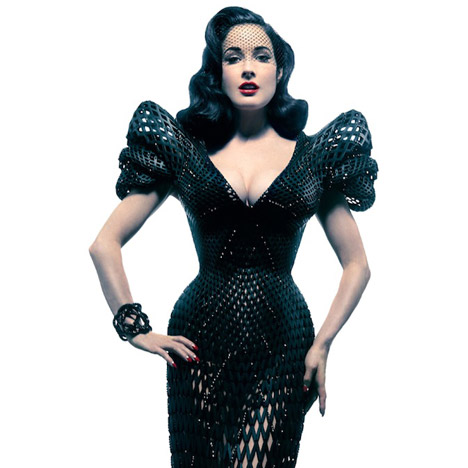Designer Michael Schmidt and architect Francis Bitonti collaborated to create this 3D printed gown that is specifically designed for the model Dita Von Teese. They enforced the spiral formula to the computer rendering of the dress that would emphasize femininity qualities of her body. This was something that interested me as a design major, since I didn’t really connect fashion with coding. By learning about this project, I realized that computational art is a broad field that can be applied to anything related to design or art. The idea of bringing digital design into a physical form was fascinating. In addition, the complicated process of creating this dress highlights its beauty. The floor-length nylon gown was made using selective laser sintering (SLS), which builds up the material in layers from plastic powder fused together with a laser. The rigid plastic components are completely articulated to create a netted structure for fluidity and movement. Also they applied spirals based on the Golden Ratio to the computer rendered Von Teese’s body so that the garment would fit her perfectly. The dress has 4000 articulative joints and all were written into CAD code so that they can be printed.

![[OLD FALL 2020] 15-104 • Introduction to Computing for Creative Practice](../../../../wp-content/uploads/2021/09/stop-banner.png)